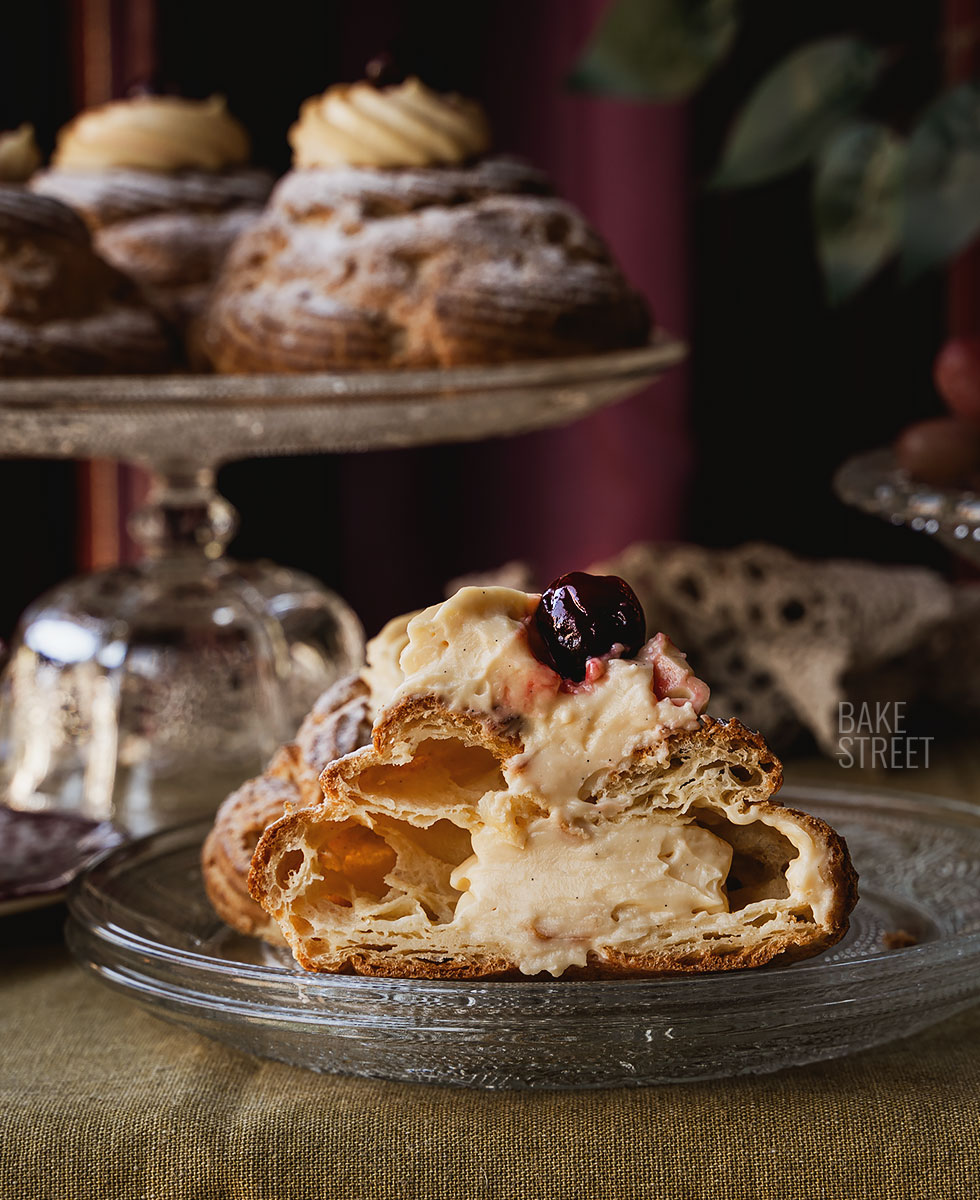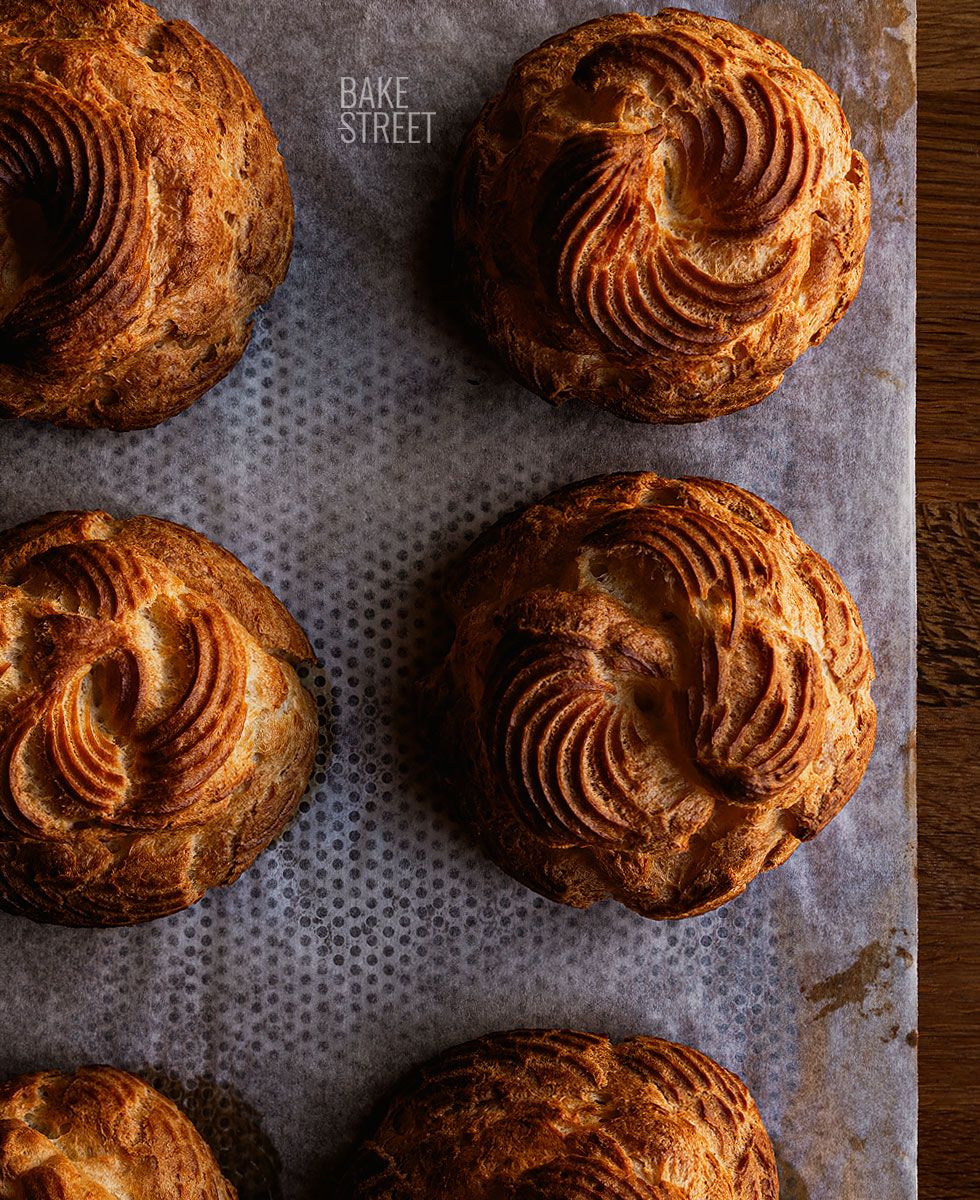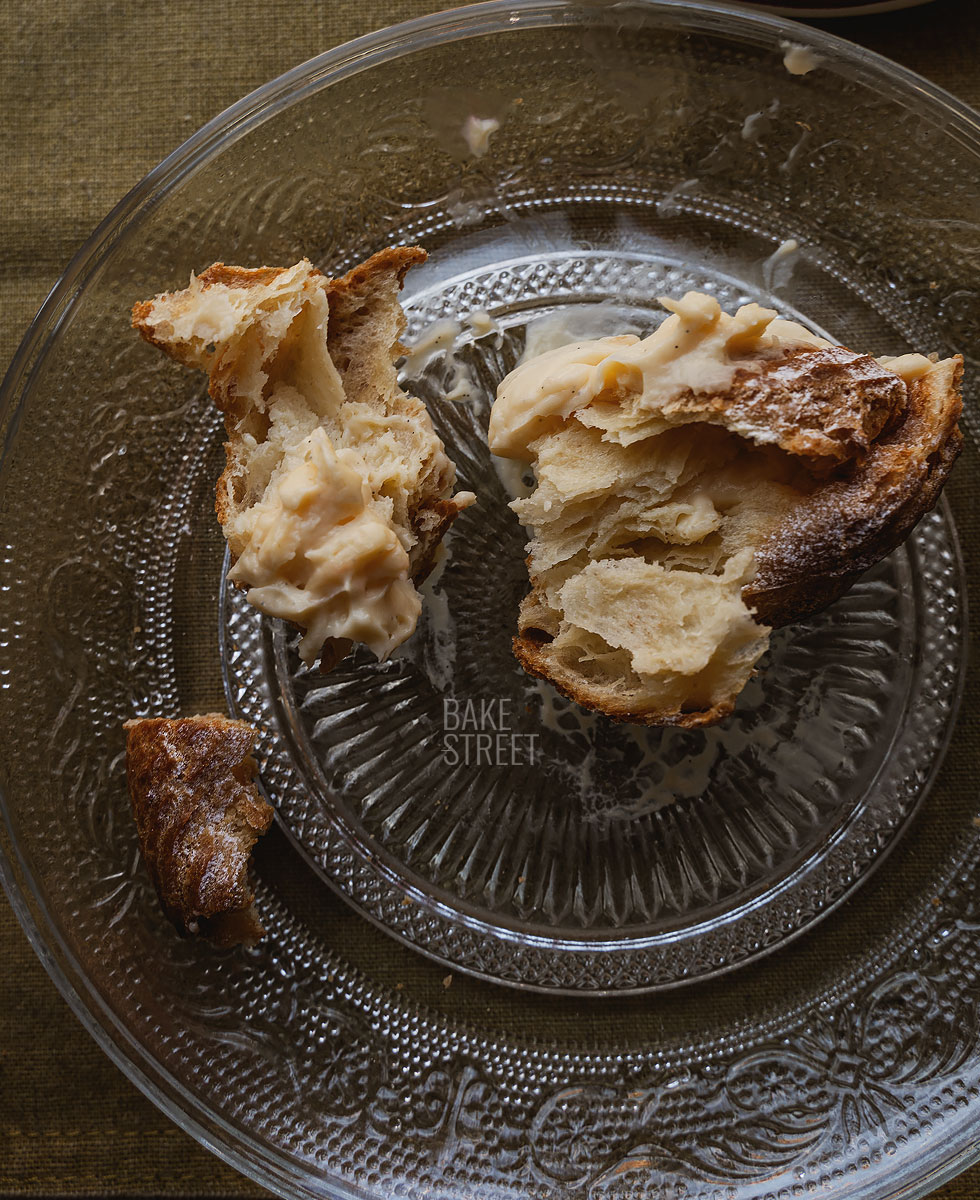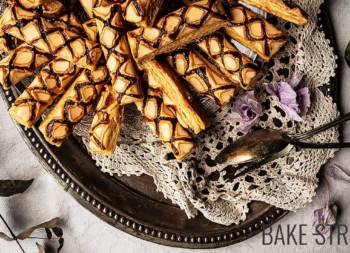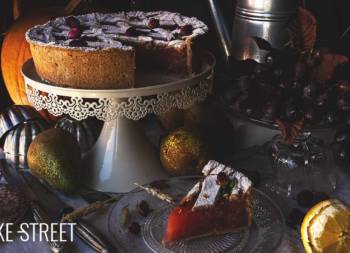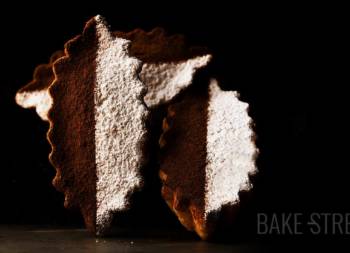
Zeppole di San Giuseppe, Neapolitan pastry
There are recipes so simple that it seems incredible that the result can be so exceptional. Among these recipes, we can find the Zeppole di San Giuseppe, Neapolitan pastry. Pieces made with choux pastry, filled with pastry cream and topped with an Amarena cherry. Three simple elements that give rise to a fabulous piece of pastry.
When it came to making these pieces, I found two ways to cook them; fried and baked. In my case, I chose to bake them since in my house, almost nobody eats sweets and, in the end, I consume most of them myself. Baked products always tolerate the passage of time better than those that are fried. But I have no doubt that their fried version, like pan-fried fruits, must be exceptional.
Zeppole di San Giuseppe origin.
Zeppole di San Giuseppe is a traditional Neapolitan dessert that is usually eaten around March 19th. They are traditionally considered desserts for Father’s Day. Certainly, it is not Father’s Day and there is still a long way to go. But, I am of the opinion that we should not deprive ourselves of delicacies like this under any circumstances. Any day is a good day to enjoy one of these wonders.
It won’t be the first time that, in my house, we eat Roscón de Reyes in August or September… And they taste great.
As is the case with many of the desserts and elaborations that have left their mark throughout the history of pastry making, the origin of zeppoles is also shrouded in various legends going back to very ancient traditions. In fact, it is believed that this sweet has its roots in 500 B.C., during the Liberalia celebrations in Rome. These festivities took place on March 17 and were dedicated to honoring Bacchus and Silenus, deities associated with wine and wheat.

The Liberalia were an occasion to give thanks to these deities for their influence on the production of wine and wheat, two fundamental elements in Roman life. During these celebrations, rituals were performed that included drinking large quantities of wine, as well as the consumption of special foods, such as the aforementioned “wheat pancakes fried in hot lard“. These festivities had a playful character and often involved dancing, music and fun.
The date of March 17 coincided with the beginning of spring in the Roman calendar, which added a symbolic meaning to these festivities by marking the rebirth of nature.
Other sources relate the creation of the zeppoles to agricultural purification rites.
This festival was celebrated in the southern regions on March 19 and commemorated the end of winter and the arrival of spring. It was a tradition to light bonfires and share a kind of snake-shaped pancake rolled up on itself (hence its similarity to the shape of a doughnut) and covered with honey.
However, a Christian legend attributes the creation of the zeppoles to the flight of the Holy Family to Egypt. It tells that St. Joseph, in addition to his work as a carpenter, became a peddler of sweet pancakes in order to support Mary and Jesus. From this legend seems to arise the connection between the zeppoles and the festivity in honor of the saint, as well as the tradition of the street zeppolari of Naples.
Pasquale Pintauro, a pastry chef who ran a historic establishment in Naples, “La confectionery Pintauro“, well known for its tradition of making zeppoles and being an emblematic place to taste this delicious pastry. Until the appearance of his shop, they used to set up small benches in front of their stores, where they fried and served zeppoles directly to passers-by in the street.
Goethe, on his visit to Naples in the late 1700s, wrote: “Today was also the feast of St. Joseph, patron saint of all the frittaroli, that is, sellers of fried dough… On the thresholds of the houses , large pans were placed on the hearths in an improvised manner. One child worked the dough, another handled it and made doughnuts that he threw into the boiling oil, a third, near the pan, took out with a small skewer the doughnuts that were gradually cooked and, with another skewer, passed them to a fourth child, who offered them to passers-by …”.
The name “zeppola” probably derives from the term “serpula”, which means snake.
Others, however, argue that the name derives from zeppa, from the Latin cippus, which in Naples is identified with the wooden stop placed to correct measurement defects in furniture. Undoubtedly, a reference to the profession of St. Joseph.
Other theories are found linking the zeppole with the cymbala(m), a river boat with a flat bottom and rounded end similar to the shape of a donut. Over time, through a series of linguistic modifications, cymbala became zippula, giving rise to the term zeppola.
Another hypothesis relates its etymological root to saeptula, from saepio, girdle, a term that generically designated round-shaped objects. There is also a reference to Zi’ Paolo, name of the supposed Neapolitan fryer, who some consider the inventor of the street zeppola.

But the history of zeppole di San Giuseppe officially began in 1837.
The dessert began to take the form we know today around 1700. It is possible that it was the nuns of Splendore and Croce of Lucca or those of San Basilio of the Monastery of San Gregorio Armeno who prepared this conventual dessert.
It was when the Neapolitan gastronome Ippolito Cavalcanti, Duke of Buonvicino, included the first official recipe in Neapolitan language in one of his cooking treatises, “Theoretical-Practical Cuisine“. Some of the ingredients included in the preparation were flour, water, a little aniseed liqueur, Marsala, salt, sugar and oil for frying.
Although it seems that the first recipe of the current Neapolitan zeppole pasta is the work of the famous Pintauro, legendary “creator” of the Neapolitan Sfogliatella.
Pintauro based himself on the ancient Roman version and following Cavalcanti’s advice, he created the current zeppole. A dough enriched with eggs, lard and flavored and then fried twice, first in oil and then in lard. It was then filled with pastry cream and decorated with a black cherry or Amarena cherry.
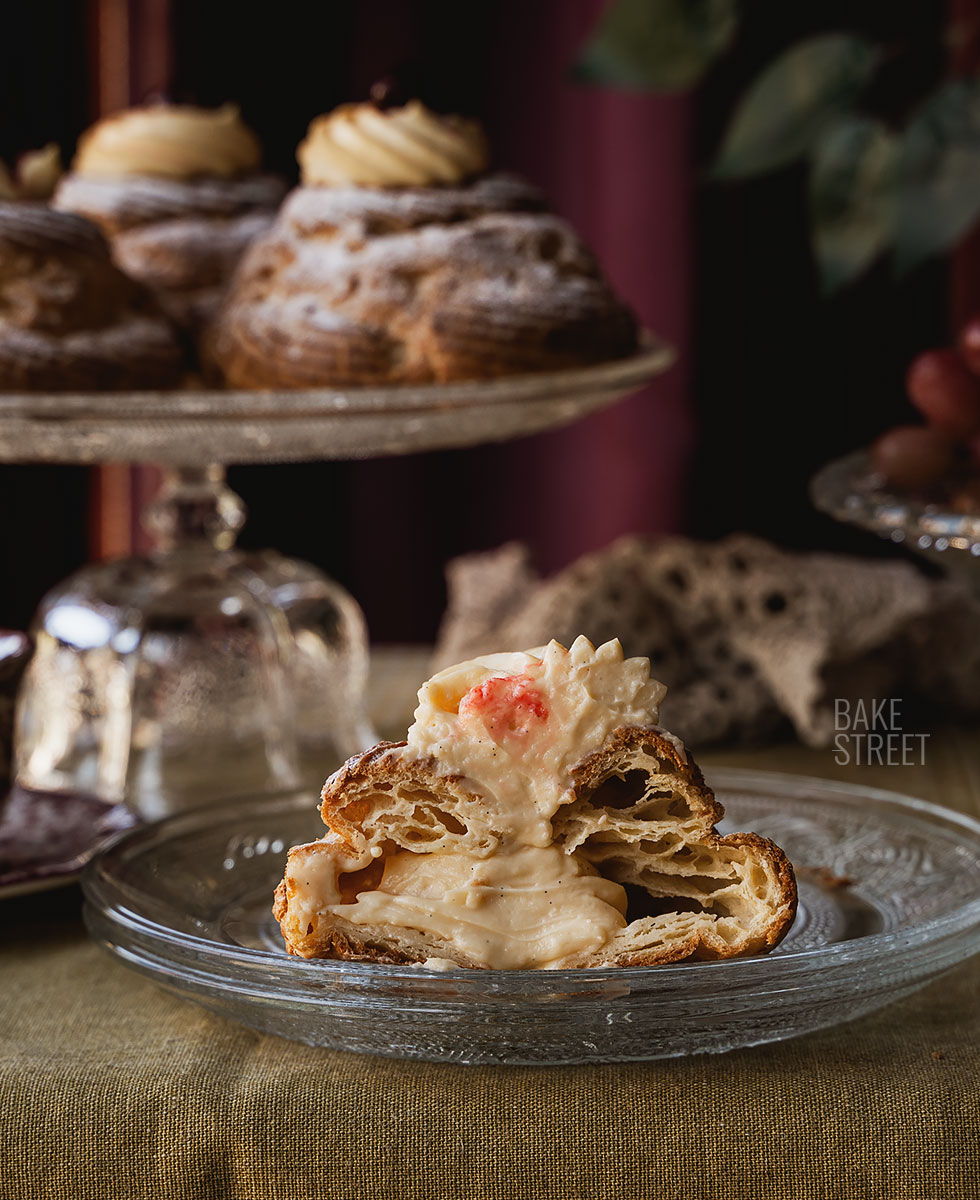
At present, you can find the variety that I leave you, its baked version.
Lighter than the original, but in which we surely lose part of its essence. The dean of the Neapolitan artisan pastry, Mario Scaturchio, says; “The real zeppola di San Giuseppe is only fried!“. According to the famous Neapolitan pastry chef, the zeppole must be fried exclusively in lard.
Zeppole di San Giuseppe are undoubtedly part of the Neapolitan tradition, but they are also prepared in other areas of Italy. As in Salento, where they are fried or baked and filled with cream or chocolate. In Sicily, more citrus flavors predominate, an addition of rice flour is used in the dough and they are usually covered with an orange honey topping. In Calabria, on the other hand, a zeppola is prepared with a filling of ricotta, sugar, cinnamon and lemon zest. Very similar to sfogliatella.
As I mentioned at the beginning, I have not been a faithful follower of the traditional process. In my case I have opted for the baked version, but if you wish, you can follow the process as I detail you only that instead of baking, you must fry the zeppoles.
Recipe Zeppole di San Giuseppe, Neapolitan pastry
CHOUX PASTRY:
- 125 g whole milk
- 125 g water
- 140 g AP flour, sifted
- 114 g unsalted butter, room temperature
- 4 g salt
- 1/2 teaspoon sugar
- zest of half a lemon
- 3-4 eggs L
PASTRY CREAM:
- 500 g whole milk
- 170 g heavy cream
- 6 egg yolks, large
- 110 g sugar
- 53 g cornstarch
- 2 teaspoons vanilla extract
DECORATION:
- powdered sugar
- Amarena cherries or Maraschino cherries (recipe in this link)
MATERIAL WE WILL NEED AND VISIBLE IN THE VIDEO:
- bowls
- whisk
- digital kitchen scale
- saucepan, mine is from DeBuyer*
- wooden spoon
- Microplane zester*
- perforated tray, mine is DeBuyer*
- cooling rack
- pastry bag + nozzle BS118 + nozzle S/F18
- linen tablecloth from Laura Ashley*
- snap from Laura Ashley*
- tablecloth saver Laura Ashley*
- precision tweezers* (facultativo)
*You have a 5% discount on the website Claudia&Julia using this code BAKESTREET. Delivers throughout Europe.
Instructions
Prepar choux pastry.
- Preheat the oven to 365ºF/185ºC fan.
- In a saucepan add the water, milk, salt, sugar, lemon zest and butter. Place over medium heat and bring to a boil.
- Once the mixture has boiled, remove from the heat and add the flour all at once. Stir with the help of a wooden spoon at a fast and continuous pace.
- You will obtain a compact ball of dough that you will have to dry. Return to medium heat and continue stirring while you dry the dough.
- You will notice that the dough clings to the base during this process, carry out this step for 2 minutes without stopping stirring or mixing at any time. The degree of dryness of the dough will directly influence the amount of eggs it will hold.
- Transfer the dough to a large bowl and let it warm for 2-3 minutes.
- Add the first egg and mix until homogeneous, thus also favoring the dough to take air influencing how much the dough can rise later during baking.
- Add the next egg and mix until completely integrated.
- Starting with the third egg, instead of adding the whole egg, you will integrate it previously beaten. That way you can add it little by little to the dough without overdoing it and spoiling the final consistency of the dough. The consistency should be as shown in the video and explained in the notes.
- NOTE: The final amount of egg will vary between 3-4 large eggs.
Pipe and bake.
- Prepare a piping bag with a star nozzle, in my case I used the S/F18 nozzle.
- Pipe the dough on a perforated tray previously lined with baking paper. To prevent the baking paper from moving, spread a little dough on each corner of the tray and adhere the paper.
- Form circles of approximately 8 cm in diameter. If you wish, you can draw circles on the paper to guide you. Remember that the painted part should be on the bottom of the paper, not where you pipe the dough.
- On top of this circle of choux pastry, pipe another circle. If you have peaks of dough, you can lower it by moistening your fingertips with water.

- Bake, placing the tray at medium height, for 25-30 minutes.
- At the end of the baking time, turn off the oven and let stand in the oven with the door ajar for 15-20 minutes.
- Remove from the oven and let cool completely on a wire rack.
Prepare pastry cream.
- In a medium saucepan pour the milk along with the cream and vanilla. Place over medium heat and let it come to a gentle boil.
- Meanwhile, in a large bowl, beat the egg yolks with the sugar and the cornstarch, previously sifted, until completely homogenized.
- Once the milk has come to a boil, pour a little of it over the yolk mixture.
- Whisk quickly to temper the yolks and prevent the yolks from curdling into lumps.
- Add the rest of the milk little by little and mixing very well at the same time.
- Pour the mixture back into the saucepan and place over medium-low heat, stirring constantly. You will notice that the texture will become thicker, but it will take a while. Patience.
- Once the cream has a creamy texture, remove from heat.
- Transfer into a tray/pan (the larger the better because it will cool faster).
- Cover with cling film to prevent it from setting and let it cool completely at room temperature.
Fill zeppole.
- Whip the pastry cream with a whisk to soften the texture.
- Put in a piping bag with a star nozzle, in my case I used the BS118 nozzle.
- Fill the inside of the zeppole with some cream. You can do it from the top or from the base. If the holes are closed, open a hole with the nozzle.
- Sprinkle the surface of pastries with powdered sugar.
- Finish decorating the zeppole withpastry cream in the center and decorating with an Amarena cherry. In my case, I used a Maraschino-style candied cherry that I made and showed you how to make in this recipe.
- Serve.

Notes
- It is important to dry choux pastry in the heat once it is cooked. It will take a couple of minutes. The better the degree of drying, the more egg it will admit.
- From the third egg, remember to add it little by little so as not to exceed the enrichment of the dough. If we exceed the amount of egg, the dough will be more fluid and will not hold its shape after the casting. If this happens to you, you can reuse this dough to make fritters.
- The baking of the choux pastry can be done with fan, as I show you in this recipe, or with heat up and down. If you do it the second way, you can follow the process of this recipe.
- The final baking time will depend on the size of the zeppole. If you make them smaller, they will need less baking time.

- Do not forget to let the choux pastry dry in the oven for a few minutes after baking, always with the door ajar.
- Some recipes fry the zeppole instead of baking them. In my case I have preferred to follow this process, but you can fry them if you prefer.
- On my website I show you several ways to make pastry cream. This time I decided to make the custard I made for the Pâtissier Flan, but if you wish, you can make the traditional custard (recipe at this link).
- Do not forget to temper the egg yolks to prevent them from curdling and forming lumps.
- Be patient when you are making the custard, it takes a little while to set and acquire consistency.
- Do not be tempted to increase the heat because you run the risk of burning some part of the base and passing the flavor to the cream.
- They can be kept refrigerated for 2-3 days.

I know you already know what I'm going to tell you.... Yes indeed, you have to try this Neapolitan delight. I promise you that it is wonderful to enjoy a Zeppoledi San Giuseppe with your freshly brewed coffee. That, that is quality of life.
A creamy, soft bite, with just the right sweetness and aromas that envelop the palate. Or bewitch. Because you can't stop looking at it and enjoying it, forgetting everything around you. Of course, at some point, I will try the traditional format, fried. But I hope my family will join me! They don't eat these things, hahaha.
I wish you a wonderful Sunday!
I remind you that you can watch all my videos on my YouTube channel. If you subscribe and activate the little bell, I will be eternally grateful to you!
Lots of love,
Eva
Sources: Italian Traditions, La Màdia, Gazetta del Gusto
This post contains affiliated links.

